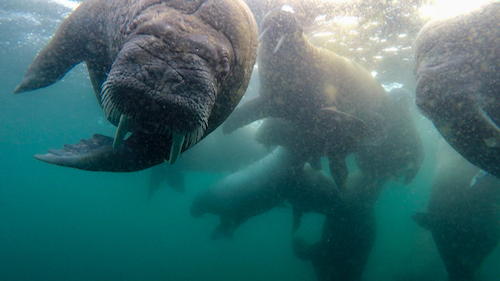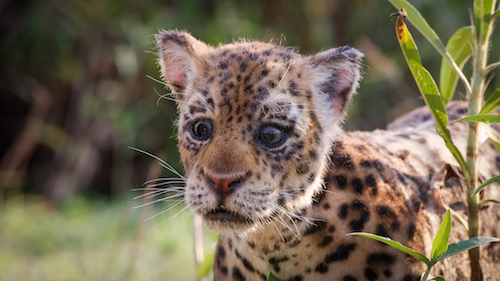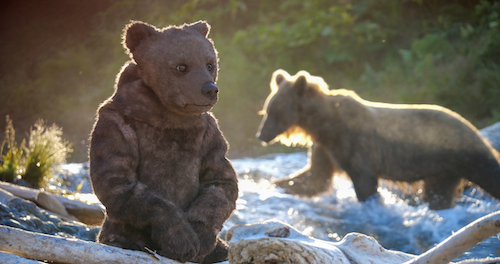Communiqué
NATURE’S Favorite Spy Cam Creatures Return – Wednesday, April 29 at 8 pm
< < Back toDelving Deeper into the Animal Kingdom to Capture Rarely Seen Behavior in Season 38 Finale Spy in the Wild 2
Travel the globe with more than 50 animatronic spy creatures in a new four-part miniseries, premiering Wednesdays, April 29 – May 20 at 8 p.m. on PBS
Nature’s spies are back undercover. Their mission? To go deeper into the animal world than ever thought possible. From the hot and humid tropics to the freezing poles, the sequel to 2017’s popular Nature: Spy in the Wild miniseries places even more spy creatures in the middle of some of nature’s greatest events. Season 38 finale, Nature: Spy in the Wild 2, premieres nationwide Wednesdays, April 29 – May 20 at 8 p.m. on PBS, pbs.org/spyinthewild and the PBS Video app.

John Downer Productions created more than 50 realistic animatronic spy creatures for the new miniseries, including a gorilla, Komodo dragon, hummingbird, King penguin, Pygmy elephant, koala, quokka, seal and polar bear. Each spy creature looks like the animals they film and behaves like them too. Accepted by animal families, these robotic lookalikes can not only film from an intimate perspective but also interact with the animals, gaining revelatory insights into their worlds as they feed, breed and fight. The spy cams even go beyond the animal kingdom, using innovative camera technology that allows a spy turtle to lay robot eggs, a spy squirrel to gather robot nuts, monkeys to play with a spy snowball and more.
“Spy in the Wild 2 has more incredible animal behavior moments and firsts, while escalating the spy cam technology to a whole new level,” said Fred Kaufman, executive producer for Nature. “John Downer and his ambitious team built a vast army of incredibly realistic spy creatures. The spies were able to infiltrate all kinds of territory, from under the Pacific Ocean to the harsh Arctic cold. What they captured is unforgettable.”
One first captured on film includes the phenomenon of mobula rays “vortex feeding” in the seas of Baja California. Another groundbreaking first is Uganda’s chorus of wild mountain gorillas singing on-screen.

In the jungles of Brazil, a spy jaguar cub stumbles upon a rare intimate moment between a jaguar couple. In the mountains of Mexico, a spy hummingbird ventures into the heart of a breathtaking monarch butterfly swarm. A spy koala films the action-packed breeding behavior of these normally slow-moving animals in Australia, filmed prior to the recent wildfires. In South Georgia, a spy King penguin watches on as penguin parents, home from hunting, must push their way through a barrier of 6,000 elephant seals in order to feed their chicks.
“The Tropics,” premieres Wednesday, April 29 at 8 p.m. on WOUB, pbs.org/spyinthewild and the PBS Video app
The spy creatures investigate the wildlife that thrives in the tropics. They infiltrate a hippo pod, a nursery of red flying foxes, a gorilla sanctuary and the secret world of pygmy forest elephants.
“The North,” premieres Wednesday, May 6 at 8 p.m. on WOUB, pbs.org/spyinthewild and the PBS Video app
Travel to the Northern Hemisphere, where the spy creatures learn how animals move, feed and fight. A spy hummingbird films millions of butterflies, and a spy squirrel winds up in a battle. A spy beaver observes other beavers building dams.
“The Islands,” premieres Wednesday, May 13 at 8 p.m. on WOUB, pbs.org/spyinthewild and the PBS Video app
Explore the islands of the South Pacific with creatures like the spy koala, who captures breeding behavior in Australia, or the spy crab, who joins an army of red crabs on their march to the sea to deposit their eggs.

“The Poles,” premieres Wednesday, May 20 at 8 p.m. on WOUB, pbs.org/spyinthewild and the PBS Video app
From penguin chicks to elephant seals and wolf cubs to polar bears, the spy creatures meet and observe the hardiest and most charismatic animals in the Arctic and Antarctic circles.
Now in its 38th season on PBS, Nature brings the wonders of natural history to millions of American viewers. The series has won more than 700 honors from the television industry, the international wildlife film communities and environmental organizations, including 18 Emmys and three Peabody Awards. The series is available for streaming simultaneously on all station- branded PBS platforms, including PBS.org and the PBS Video app, which is available on iOS, Android, Roku, Apple TV, Amazon Fire TV and Chromecast. PBS station members can view episodes via Passport. Click here to join WOUB Passport and have access to streaming content today!

